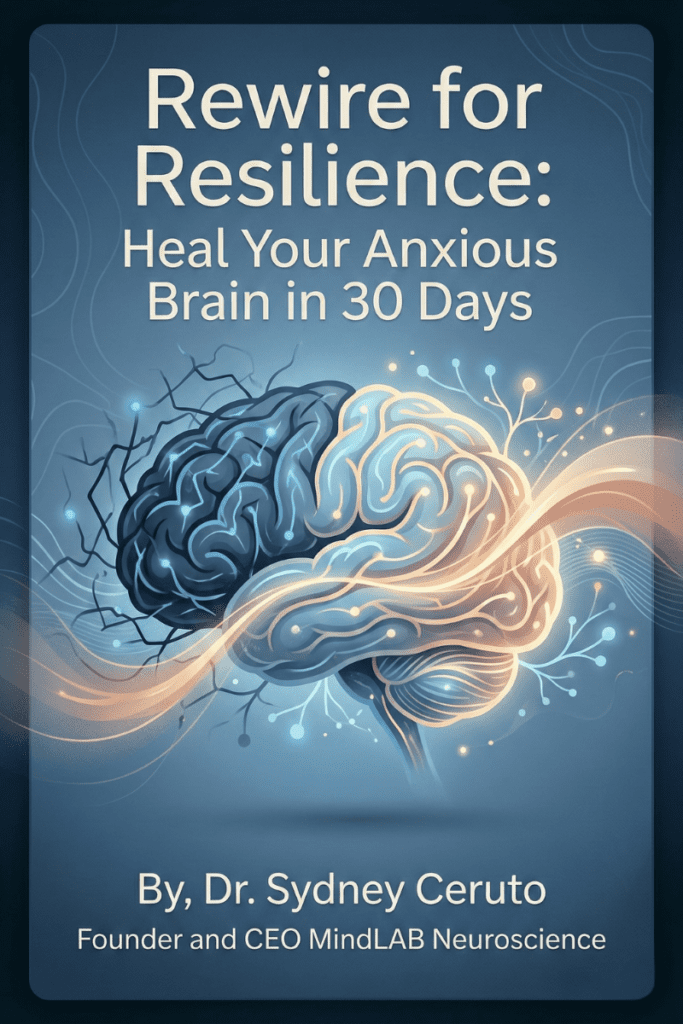In a world constantly bombarding us with idealized images of success and beauty, the journey to self-acceptance can feel like an uphill battle. But what if the key to truly liking yourself lies not in external validation, but in understanding the intricate workings of your own brain? Welcome to the fascinating intersection of self-acceptance and neuroscience, where cutting-edge research is revolutionizing the way we approach personal growth and well-being.
The Neuroscience of Self-Acceptance: Rewiring Your Brain for Positivity
Before we dive into practical strategies, let’s explore the neural foundations of self-acceptance. Recent advancements in neuroscience have shed light on the brain’s remarkable plasticity – its ability to form new neural connections and rewire itself throughout our lives. This concept, known as neuroplasticity, is at the heart of self-acceptance neuroscience.
The Role of the Default Mode Network
The Default Mode Network (DMN) is a group of interconnected brain regions that become active when we’re not focused on the external world. It plays a crucial role in self-reflection, autobiographical memory, and our sense of self. Research has shown that individuals with lower self-esteem often have an overactive DMN, leading to excessive rumination and negative self-talk.
The Amygdala and Emotional Regulation
The amygdala, often called the brain’s “fear center,” plays a significant role in processing emotions, particularly fear and anxiety. In individuals struggling with self-acceptance, the amygdala can become hyperactive, leading to heightened sensitivity to perceived threats to self-worth.
The Prefrontal Cortex: Your Brain’s Executive Control Center
The prefrontal cortex is responsible for higher-order thinking, decision-making, and emotional regulation. Strengthening this area through self-acceptance practices can help you better manage negative thoughts and emotions.Now that we understand the neural underpinnings of self-acceptance, let’s explore seven powerful strategies to harness the power of neuroscience for personal growth.

1. Mindfulness Meditation: Cultivating Present-Moment Awareness
Mindfulness meditation has been shown to have profound effects on brain structure and function. Regular practice can:
- Reduce activity in the DMN, decreasing rumination and negative self-talk
- Increase gray matter density in the prefrontal cortex, enhancing emotional regulation
- Shrink the amygdala, reducing reactivity to stress and negative emotions
Practical Tip: Start with just 5 minutes of daily mindfulness meditation. Focus on your breath, and when your mind wanders, gently bring your attention back without judgment.
2. Cognitive Restructuring: Rewiring Negative Thought Patterns
Cognitive restructuring is a powerful technique from cognitive-behavioral therapy that aligns perfectly with self-acceptance neuroscience. By challenging and reframing negative thoughts, you can create new neural pathways that support a more positive self-image.Practical Tip: Keep a thought journal. When you notice a negative self-thought, write it down and challenge it with evidence to the contrary. Over time, this practice can help rewire your brain’s default responses.
3. Self-Compassion Exercises: Nurturing Your Inner Ally
Self-compassion involves treating yourself with the same kindness and understanding you would offer a good friend. Neuroscience research has shown that self-compassion practices can:
- Activate the care-giving system in the brain, releasing oxytocin and reducing stress
- Decrease activity in the self-critical regions of the brain
- Enhance emotional resilience and well-being
Practical Tip: Practice loving-kindness meditation, directing compassionate thoughts towards yourself. Start with a simple phrase like “May I be happy, may I be healthy, may I be at peace.”
4. Neuroplasticity-Based Affirmations: Reprogramming Your Neural Pathways
Traditional affirmations often feel forced or inauthentic. However, when combined with an understanding of neuroplasticity, affirmations can become a powerful tool for rewiring your brain’s self-perception.Practical Tip: Create affirmations that acknowledge your current state while gently guiding your brain towards a more positive self-image. For example: “I’m learning to accept myself more each day” or “My brain is capable of positive change.”
5. Body-Mind Connection: Embodied Self-Acceptance
The mind-body connection is a crucial aspect of self-acceptance neuroscience. Physical practices can have profound effects on brain function and self-perception.
- Yoga has been shown to increase GABA levels in the brain, reducing anxiety and promoting calm
- Regular exercise boosts the production of brain-derived neurotrophic factor (BDNF), which supports neuroplasticity and cognitive function
Practical Tip: Incorporate a mix of yoga and aerobic exercise into your routine. Pay attention to how your body feels during and after these activities, fostering a sense of gratitude for your physical self.
6. Social Connection: Harnessing the Power of Positive Relationships
Our brains are inherently social, and positive relationships play a crucial role in self-acceptance. Neuroscience research has shown that:
- Social support activates the brain’s reward centers, releasing dopamine and serotonin
- Positive social interactions can reduce activity in the amygdala, decreasing stress and anxiety
Practical Tip: Cultivate relationships with people who support and uplift you. Practice vulnerability by sharing your self-acceptance journey with trusted friends or a support group.
7. Neurofeedback Training: Direct Brain Modulation for Self-Acceptance
Neurofeedback is a cutting-edge technique that allows individuals to observe and modify their brain activity in real-time. While still an emerging field, early research suggests that neurofeedback can:
- Help regulate overactivity in the DMN, reducing negative self-talk
- Enhance emotional regulation by training specific brain wave patterns
- Improve overall brain function and cognitive flexibility
Practical Tip: While professional neurofeedback training requires specialized equipment, you can explore consumer-grade EEG devices and apps that offer basic neuro-feedback exercises at home.
The Science of Self-Acceptance: Beyond Feel-Good Platitudes
As we’ve explored, self-acceptance neuroscience offers a powerful, evidence-based approach to personal growth. By understanding the neural mechanisms underlying self-perception and leveraging neuroplasticity, we can move beyond surface-level affirmations to create lasting change.
The Neurochemistry of Self-Acceptance
Self-acceptance isn’t just about changing thought patterns; it’s also about altering your brain’s neurochemical balance. Practices that promote self-acceptance can:
- Increase serotonin levels, promoting feelings of well-being and contentment
- Boost oxytocin production, enhancing feelings of self-love and connection
- Regulate cortisol levels, reducing the physiological impact of stress on the body and brain
Epigenetics and Self-Acceptance: Changing Your Genetic Expression
Emerging research in epigenetics suggests that our experiences and behaviors can influence how our genes are expressed. Practices that promote self-acceptance may have the power to:
- Activate genes associated with stress resilience and emotional regulation
- Suppress the expression of genes linked to inflammation and chronic stress
- Enhance overall cellular health and longevity

Integrating Self-Acceptance Neuroscience into Daily Life
While the science behind self-acceptance is fascinating, the real power lies in its practical application. Here are some additional tips for integrating these insights into your daily routine:
- Create a Brain-Friendly Environment: Surround yourself with positive cues that reinforce self-acceptance. This could include affirmations, artwork, or photos that evoke positive emotions.
- Practice Gratitude: Regular gratitude exercises have been shown to increase activity in the prefrontal cortex and decrease activity in the DMN, promoting a more positive self-image.
- Engage in Creative Activities: Creativity activates multiple brain regions and can promote a sense of flow and self-expression, enhancing overall well-being.
- Get Adequate Sleep: Quality sleep is crucial for brain health and emotional regulation. Prioritize good sleep hygiene to support your self-acceptance journey.
- Mindful Technology Use: Be aware of how social media and other digital inputs affect your self-perception. Use technology mindfully to support, rather than undermine, your self-acceptance goals.
The Future of Self-Acceptance Neuroscience
As neuroscience continues to advance, we can expect even more targeted and effective approaches to fostering self-acceptance. Some exciting areas of research include:
- Personalized Neuroplasticity Programs: Tailored interventions based on individual brain scans and genetic profiles
- Virtual Reality Therapy: Immersive experiences designed to rewire negative self-perceptions
- Advanced Neuro-Feedback: More sophisticated, user-friendly tools for at-home brain training
Embracing Your Neuroplastic Potential
The journey to self-acceptance is not always easy, but armed with the insights of neuroscience, it becomes a fascinating exploration of your brain’s incredible potential for change. By understanding and working with your neural circuitry, you can cultivate a deeper, more authentic sense of self-love and acceptance.Remember, your brain is constantly changing and adapting. Every thought, every action, and every moment of self-compassion is an opportunity to rewire your neural pathways towards greater self-acceptance. Embrace this neuroplastic potential, and watch as your relationship with yourself transforms.





